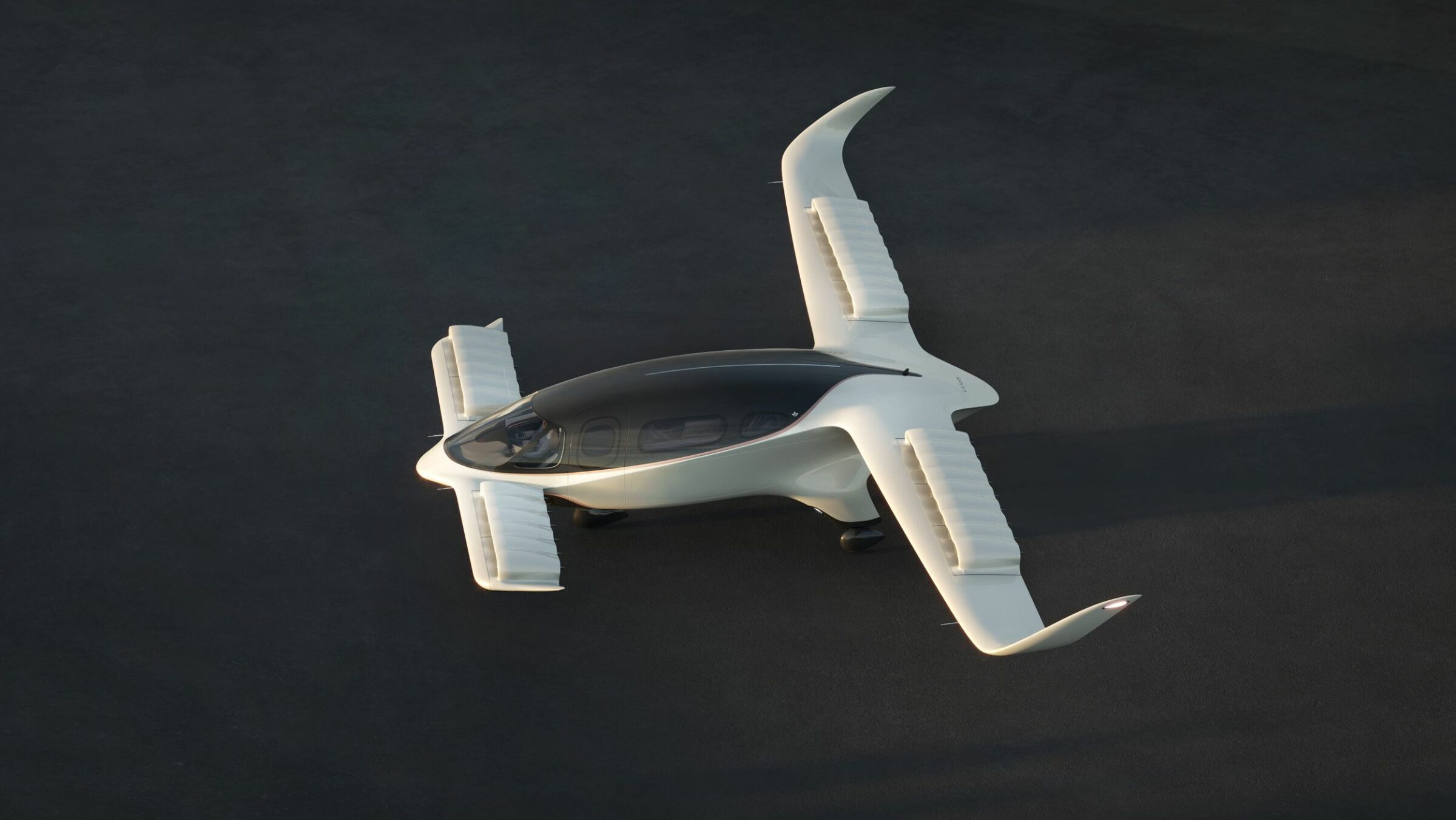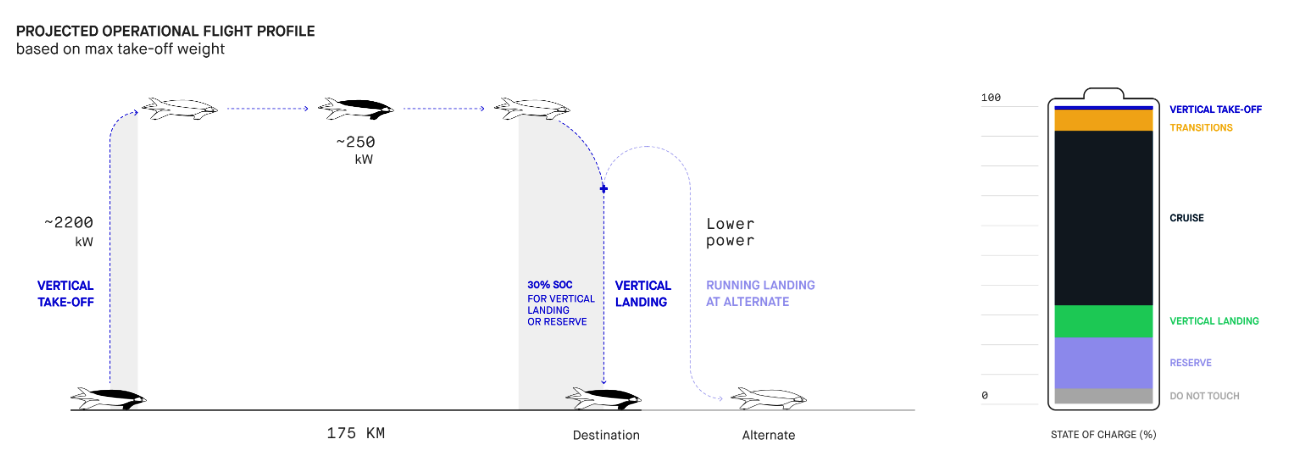Leeham News and Analysis
There's more to real news than a news release.
Bjorn’s Corner: Sustainable Air Transport. Part 35. Lilium battery cells.
September 2, 2022, ©. Leeham News: This is a summary of the article Part 35P, Lilium battery cells.
It discusses the requirement the Lilium jet principle puts on its battery cells and how this is solved, both with a slightly different cell type and with some operational adaptations.
The Lilium battery cell
The Lilium architecture, with its 30 jets, puts extra strain on the battery system during hover and transition, as discussed in Part 30.
Figure 1 is from the Lilium battery blog, where the typical power consumption during different phases of flight and the use of the battery’s State Of Charge (SOC) is shown.
The high hover power need of 2,500kW peak, 2,200kW average, leads Lilium to adopt an NMC cell with a silicon based anode developed by Zenlabs with an energy density of 319 Wh/kg at a 1C discharge rate.
Due to the high power demand from the battery at transition and hover, a Lilium pilot flying VFR (IFR certification is a later step for the jet) must decide at around 30% battery SOC to land at the heliport or to divert to an airfield for a normal landing. The reason is, with a power demand of 2,500kW, the hover must be finished before 20% SOC, or the battery cannot guarantee a 2,500kW power level.
The range given in Figure 1 is 94nm with a new battery. A battery typically degrades to a charge level of 80% SOC after about 1000 flights. How fast this degradation happens depends on the charge C rate. The 1000 cycles are for a charge rate of 1 C, i.e., it takes about 45 minutes to charge the battery after a flight that has consumed 75% of the battery. With a mission that has 80% SOC at the start and that must be finished before 20% SOC, the range is 55nm.
If you decide to divert at 30% SOC, you have energy for an alternate airfield that lies within 25nm/45km from your decision point. This assumes the VFR landing procedures (any vectoring followed by landing) take five minutes.
Conclusion
The reserve strategy from Lilium with a normal landing after a decision point before transition and hover is a consequence of the design with 10 times higher hover power consumption than for normal flight. It will work if airports are available within 10 minutes flight of the decision point.
Will the above diversion strategy be accepted by the regulator, or will the rules contain extra reserves like a diversion airfield holding time? The reserve rules for EASA SC-VTOL, which are the certification rules Lilium follows, are not set yet. We will have to wait and see.





The flight (path) profile will not be rectangular, will it?
Ascend will not be vertical to reach cruise height
and landing will not be in hover for the full descent.
so how long is the window that really requires “full hover power”. ( controlled transition and the last nn meters to touch down. both and each less than 20..30 seconds?)
Lilium says 20 seconds for the takeoff hover and 45 for the landing hover, which makes sense. Transition is then a fixed G acceleration, adding about another 20 to 30 seconds with gradually lower power need until you are at a conventional aircraft climb power need until your cruise altitude.
How compatible is all these eVTOLs with current ATC? Can ATC handle the added workload (especially when more get close to major urban centers/major airports)??
More questions than answers???
I assume this also has the option of runway takeoff? what are their range figures for runway to runway flights?
I also assume they could to runway takeoff to vert landing and gain some range…
-I suspect many of Lilium Jets routes will by nature begin and end at or near at least one airport. This will provide natural divert runway. For instance London City to transfer to Gatwick Airport or Heathrow. The Lilium may operate using the runway or operate from a vertiport a few kilometres away. It’s not ideal but it will serve to start operations initially. Many cities have a surprisingly significant number of light airports.
-It shouldn’t be too difficult to provide emergency vertiport diverts along the route given the small land area. I am curious of the STOL abilities of Lilium. How much runway is required.
The IFR reserve requirement is twice Lilium’s entire range capability. Is this a VFR only aircraft?
It’s meant to be pilotless in the long term. Clearly new rules will be needed to make eVTOL UAM and RAM feasible. eVTOL will have many safety advantages but endurance is not one of them. Certainly it should be easy to provide vertiports every 10 kilometres given there small area. Some kind of instrument landing system will be needed. Legacy instrument technology I see as a hinderance and too expensive.
The diversion distance is driven by the need to get out of bad weather, so having another vertiport nearby that is also in the same blizzard does not help. It seems all these range limited machines are fair weather only.
Range / available flight time is short enough to be able to predict destination weather with excellent quality.
Only ever start with a clear fligh tpath?